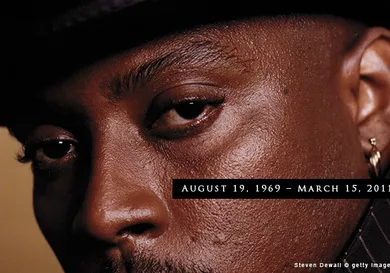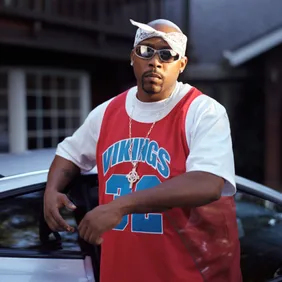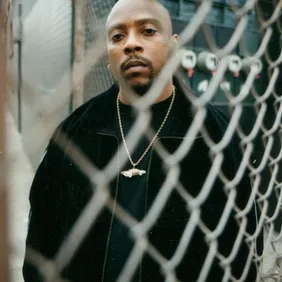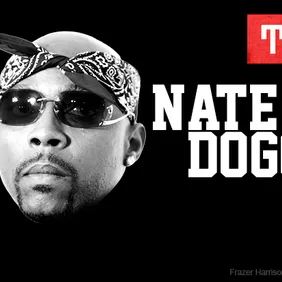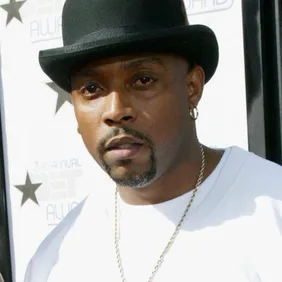On March 15, 2011, Nathaniel Dwayne Hale, who we know better as Nate Dogg, passed away from complications of multiple strokes. He left behind a body of work that includes the best hooks rap has ever seen.
You might know him from the G-funk classic “Regulate” or from the lustful Ludacris single “Area Codes.” Or maybe from his role in Fabolous “Can’t Deny It” or from the infamous “heyayayay, smoke weed every day” on Dr. Dre’s Chronic 2001. Nate Dogg helped to make these tunes, and more, popular hits of their time.
In order to measure the impact of Nate Dogg’s hooks, we must first define what a hook is. “A hook is a musical idea, often a short riff, passage, or phrase, that is used in popular music to make a song appealing and to ‘catch the ear of the listener’” Nate Dogg is the undisputed king of the hook.
Nate Dogg’s career started when Warren G, Snoop Dogg and himself formed the group 213. They wouldn’t release a full project until 2004, but the trio can be heard on the likes of The Chronic or Doggystyle. 213 was one of the early adapters of the G-funk style, a mix of ‘80s funk and hip hop. Nate’s soulful voice is perfect over these kind of beats, and there is no doubt that he had a huge role in the sub-genre’s impact early on.
His debut was on The Chronic, which just goes to show what kind of legend we’re working with here. The same album that launched the careers of Snoop Dogg, Kurupt, Daz Dillinger, and Warren G also launched that of Nate Dogg. The track “Deeez Nuts”
Nate Dogg wouldn’t emerge as a full-fledge solo artist until 1998, when he released the double album G-Funk Classics, Vol. 1 & 2. With his debut, you get exactly that: G-Funk classics. His smooth delivery was soft enough for the ladies, but hard enough for the fellas at the same time. The mix of hip hop tendencies with classic R&B and Soul delivery fell alongside this funky new sound, and when paired up with an MC, it was a force to be reckoned with.
Although he never saw the type of solo success that his peers Snoop Dogg or Dr. Dre achieved, it would be in the early 2000s where Nate Dogg became a household name across pop culture, not just west coast rap. “The Next Episode” kicked off a string of singles over the next few years that make the case that Nate Dogg was the most important singer in rap music at that time.
Nate Dogg was everywhere for a little while after that. He was on “Lay Low” with Snoop Dogg and Master P, then “Can’t Deny It” with Fabolous, then “Area Codes” with Ludacris, then really knocked it out of the park on “21 Questions” with 50 Cent. Most singers are lucky to have a feature on ONE song that big, but Nate Dogg strung together incredible hooks on smash singles like nobody had before.
So what was his impact on these tracks, and why was it so important? Well it was around that time that rap music was really making its case as the dominate form of pop music. It was no longer just something on the streets, but it was on video countdowns all over cable television. There were lots of rappers breaking out of the clubs to perform in stadiums and arenas across the country. Jay Z, Eminem, Ludacris, Missy Elliott, and more hip hoppers were making rap music accessible for everybody. They were making it pop music. How does music become pop music? It becomes popular.
In order for it to become popular, it needs to be accessible. For music, accessibility comes in the form of radio, yes, but it also comes in your own mind. When you walk around humming a tune or singing a chorus, that artist has made the song very accessible for you. Nate Dogg did this on a bunch of tracks, making his features maximize the exposure of albums. In pop music, a big portion of the songwriting is focused on the hook, and Nate Dogg seemed to do this effortlessly.
Here are some of the best hooks he layed. You almost can’t help but to read them in Nate Dogg’s singing voice…
“I’ve got hoes [hoes] / In different area codes [area] / Area code [codes]”
“For the nigga who be talking loud and holding his dick, talking shit / He better lay low”
“Y'all can't deny it, I'mma fuckin' rider / You don't wanna fuck with me / Got scales in the trunk with me / Switching lanes, do a buck with me”
“Girl, it's easy to love me now / Would you love me if I was down and out? / Would you still have love for me?”
These little vocal ditties stuck in your head like boots in the mud. You couldn’t help but to attach yourself to Nate Dogg’s baritone hook whenever the song came on. Where rap is dominated by fast-paced, and sometimes high-pitched, verses, Nate Dogg’s super slow, super deep vocal style was always the nicest form of alleviation. His hooks were like desert after the rapper gave you food for thought.
It didn't stop with the smash hits either. Nate Dogg contributed literally hundreds of hooks, verses, choruses, and more to dozens of artists in the industry. From Mariah Carey to Lil Jon, tons of rappers, singers, and producers have tapped in to Nate Dogg's genius to give their track that special flavor. He has such a pleasant voice that everything he touch kind of turns to gold!
In 2015, the hook is still poppin’ off, but there hasn’t been anyone who does it quite like Nate Dogg. There may never be another to do it like him again. Today, on the four year anniversary of his passing, it is with a heavy heart and a grateful mind that we pay homage to the king of the hook. Thank you Nate Dogg.
